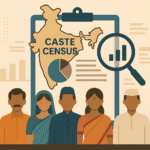1. Introduction
Minority rights have evolved as a crucial component of international human rights law. They seek to ensure that individuals who belong to minority groups are not marginalized, discriminated against, or denied opportunities to preserve their distinct cultural, religious, linguistic, and ethnic identities. The evolution of minority rights reflects the transition from a state-centric system focused on sovereignty to a global legal framework that emphasizes universal human rights and dignity.
The term “minority” is not universally defined in international law, but generally refers to groups differentiated from the majority population by ethnicity, religion, language, or national identity, and who seek to preserve their distinctiveness. The rights of minorities are both individual (e.g., freedom of expression, religion) and collective (e.g., rights to cultural preservation, language use, and political participation).
Here are commonly accepted important definitions of “minorities” as recognized in international law, academic research, and case law, including by Francesco Capotorti, J. Deschênes, and the ECHR (European Court of Human Rights):
📘 a. Francesco Capotorti Definition (UN Special Rapporteur, 1977)
Capotorti offered one of the most widely cited definitions in his report to the United Nations:
“A minority is a group numerically inferior to the rest of the population of a state, in a non-dominant position, whose members—being nationals of the state—possess ethnic, religious or linguistic characteristics differing from those of the rest of the population and show, if only implicitly, a sense of solidarity, directed towards preserving their culture, traditions, religion or language.”
📌 Key Elements:
- Numerical inferiority
- Non-dominant position
- Citizenship of the state
- Distinct identity (ethnic, religious, linguistic)
- Solidarity to preserve identity
📘 b. Jules Deschênes Definition (UN Sub-Commission, 1985)
Justice J. Deschênes expanded on Capotorti’s work in his own report:
“A minority is a group of citizens of a State, constituting a numerical minority and in a non-dominant position in that State, endowed with ethnic, religious or linguistic characteristics which differ from those of the majority of the population, having a sense of solidarity with one another, motivated by a collective will to survive and whose aim is to achieve equality with the majority in fact and in law.”
📌 Key Additions:
- Explicit reference to citizenship
- Emphasis on equality in fact and in law
- Collective will to survive
⚖️ c. ECHR Case: Minority Schools in Albania v. Greece (1996)
Although this case was more procedural, it reaffirmed minority protections under Article 14 (non-discrimination) and Article 2 of Protocol No. 1 (right to education) of the European Convention on Human Rights. The court upheld that state measures must not deprive minorities of access to education in their language or culture, and recognized the importance of preserving minority identity.
While the case doesn’t define “minority” explicitly, the court’s interpretation underlined that:
Minority rights must be interpreted in light of the objective to protect pluralism and cultural diversity.
📘 d. UN Declaration on the Rights of Persons Belonging to National or Ethnic, Religious and Linguistic Minorities (1992)
Though it avoids a rigid definition, it implies that:
Minorities are groups with national, ethnic, religious, or linguistic identities, differing from the majority, who are entitled to enjoy their own culture, profess and practice their own religion, and use their own language.
🧭 e. Working Definition by the UN Sub-Commission (1979–1985 Debates)
While never adopted officially, this proposed functional definition was:
“A group of persons in a state who are numerically less than the rest of the population, possess ethnic, religious, or linguistic characteristics differing from those of the rest of the population, and maintain a sense of solidarity aiming at preserving their culture, traditions, religion, or language.”
2. Historical Context
The earliest attempt to safeguard minority rights can be traced to the League of Nations’ minority treaties after World War I. These bilateral and multilateral treaties aimed to protect ethnic, religious, and linguistic minorities in the newly formed nation-states of Europe. However, these efforts were often inconsistent and lacked enforcement mechanisms.
After the atrocities of World War II, especially the Holocaust, the focus of international law shifted to a universal human rights approach. The establishment of the United Nations in 1945 marked a significant milestone in the promotion and protection of human rights, including those of minorities.
3. Core International Legal Instruments
3.1 Universal Declaration of Human Rights (UDHR), 1948
Although the UDHR does not explicitly refer to minorities, it provides a foundation for non-discrimination and equality:
- Article 2: Everyone is entitled to all rights and freedoms without distinction.
- Article 26: Right to education.
- Article 27: Right to freely participate in cultural life.
3.2 International Covenant on Civil and Political Rights (ICCPR), 1966
- Article 26: Guarantees equality before the law and protection against discrimination.
- Article 27: Specifically protects the rights of ethnic, religious, and linguistic minorities to enjoy their culture, practice their religion, and use their language.
3.3 International Covenant on Economic, Social and Cultural Rights (ICESCR), 1966
- Article 2: Mandates non-discriminatory access to rights.
- Article 13: Right to education, which includes the right of minorities to education in their language.
3.4 UN Declaration on the Rights of Persons Belonging to National or Ethnic, Religious and Linguistic Minorities (1992)
- Article 1: States shall protect the existence and identity of minorities.
- Article 2: Minorities have the right to enjoy their own culture, profess and practice their own religion, and use their own language.
- Article 3: Minorities may participate in decisions affecting them.
- Article 4: States should take measures to promote full and effective participation of minorities.
4. Regional Legal Instruments
4.1 European Framework Convention for the Protection of National Minorities (1995)
This is the most comprehensive regional treaty devoted to minority rights:
- Article 3: Minorities have the freedom to declare their identity.
- Article 4: Equality before the law.
- Article 5: Right to preserve essential elements of their identity.
- Articles 9-12: Rights to media access, education in minority language, and cultural expression.
4.2 American Declaration of the Rights and Duties of Man & Additional Protocol of San Salvador
While not directly focused on minorities, these documents affirm non-discrimination and equal protection which apply to minority communities.
4.3 African Charter on Human and Peoples’ Rights (1981)
- Article 19: All peoples shall be equal.
- Article 20-24: Recognizes collective rights, indirectly benefiting minority groups.
4.4 Arab Charter on Human Rights (2004)
- Article 25: Guarantees protection against ethnic and religious discrimination.
5. Fundamental Principles of Minority Rights
5.1 Non-discrimination and Equality
International law mandates that states must ensure minorities are not discriminated against in law or practice. Positive obligations may include special measures to support minority inclusion.
5.2 Cultural Integrity
Minorities must be able to preserve and promote their cultural traditions, festivals, heritage, and language.
5.3 Language and Education Rights
Right to education in one’s native language is a cornerstone of cultural preservation.
- States are encouraged to allow minority languages in school curricula.
5.4 Religious Freedom
Minority groups have the right to practice and propagate their religion freely.
5.5 Political Participation
Minorities should have opportunities to participate in public life, through voting, public office, or advisory bodies.
6. Implementation and Monitoring Mechanisms
6.1 UN Treaty Bodies
- The Human Rights Committee oversees ICCPR implementation and reviews periodic reports.
- CESCR monitors economic and social rights, including those of minorities.
6.2 Special Rapporteur on Minority Issues
Appointed by the UN Human Rights Council, the Special Rapporteur investigates issues, conducts country visits, and reports findings.
6.3 Universal Periodic Review (UPR)
This peer-review mechanism reviews states’ human rights records and makes recommendations on minority protections.
6.4 Regional Monitoring Bodies
- The Advisory Committee of the Council of Europe monitors compliance with the Framework Convention.
- Inter-American and African Commissions also issue recommendations affecting minority groups.
7. Notable Jurisprudence and Case Studies
7.1 UN Human Rights Committee
- Lovelace v. Canada (1981): Upheld the cultural and identity rights of indigenous women.
- Kitok v. Sweden (1985): Addressed language and indigenous rights.
7.2 European Court of Human Rights
- Minority schools in Albania: Reinforced rights to education and cultural autonomy.
- Sidiropoulos v. Greece (1998): Recognized the right of Macedonian minorities to form associations.
7.3 Inter-American Court of Human Rights
- Awas Tingni v. Nicaragua (2001): Upheld collective land rights of indigenous minorities.
8. Challenges to Minority Rights Implementation
8.1 Statelessness
Lack of citizenship hinders access to legal protections. Examples include the Rohingya in Myanmar.
8.2 Assimilationist Policies
States may push for cultural integration that erodes minority identities.
8.3 Nationalism and Populism
Rise of xenophobic and majoritarian politics undermines pluralism.
8.4 Language Suppression
Official language policies often marginalize minority languages.
8.5 Economic Marginalization
Many minorities face systemic poverty and limited access to education and healthcare.
9. Tools and Remedies for Protection
9.1 Legal Remedies
National courts and constitutional frameworks must align with international standards.
9.2 Advocacy and Civil Society
NGOs play a pivotal role in monitoring abuses and advancing minority rights.
9.3 International Support
UNESCO, UNDP, and other agencies offer funding and technical assistance for minority-focused projects.
9.4 Capacity Building
Training local communities to assert their rights enhances effectiveness.
10. Conclusion
Minority rights are a vital part of the international legal framework. They ensure that diversity is preserved, and all communities can coexist peacefully. Although significant treaties and conventions—such as the ICCPR, ICESCR, and the UN Declaration on Minorities—lay down robust protections, the real challenge lies in enforcement. Through legal reforms, international cooperation, and community empowerment, the promise of equality and dignity for minorities can be made a global reality.
The journey of protecting minority rights continues to evolve. As international norms expand to reflect diversity and inclusion, it is the shared responsibility of states, institutions, and civil society to ensure that minority communities are not just protected in law, but empowered in practice.
Read the full text of Minority Declaration referred as Declaration on the Rights of Persons Belonging to National or Ethnic, Religious and Linguistic Minorities for more clarity on minorities and minority rights. For more articles on human rights follow RightsRecall.


